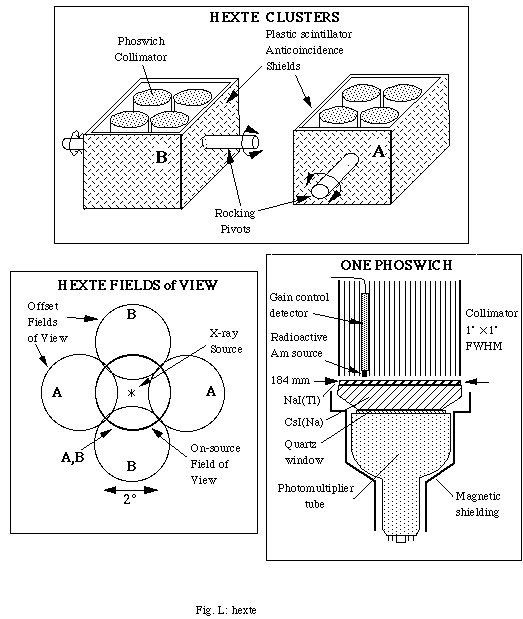The High Energy X-ray Timing Experiment (HEXTE)
The HEXTE consists of two clusters each containing four `phoswich
scintillation detectors. Each cluster can ``rock'' (beamswitch)
along mutually orthogonal directions to provide background measurements
1.5 or 3.0 degrees away from the source every 16 to 128 s. Automatic
gain control is provided by using a 241Am radioactive source
mounted in each detector's field of view.

The HEXTE's basic properties are:
- Energy range: 15 - 250 keV
- Energy resolution: 15% at 60 keV
- Time sampling: 8 microsecond
- Field of view: 1 degree FWHM
- Detectors: 2 clusters of 4 NaI/CsI scintillation counters
- Collecting area: 2 times 800 cm^2
- Sensitivity: 1 Crab = 360 count/s per HEXTE cluster
- Background: 50 count/s per HEXTE cluster
Events detected by HEXTE will be processed on board by its own data
system before insertion into the telemetry stream at an average
data rate of 5 kbit/s. Data products include event mode, binned
spectra and light curves, and a burst-triggered event buffer.
The HEXTE was designed and built by the Center for Astrophysics &
Space Sciences (CASS)
at the University of California, San Diego. For more information, see the HEXTE home
page at UCSD.
The HEXTE principal investigator is
Dr. Richard E. Rothschild.
Return to the image

